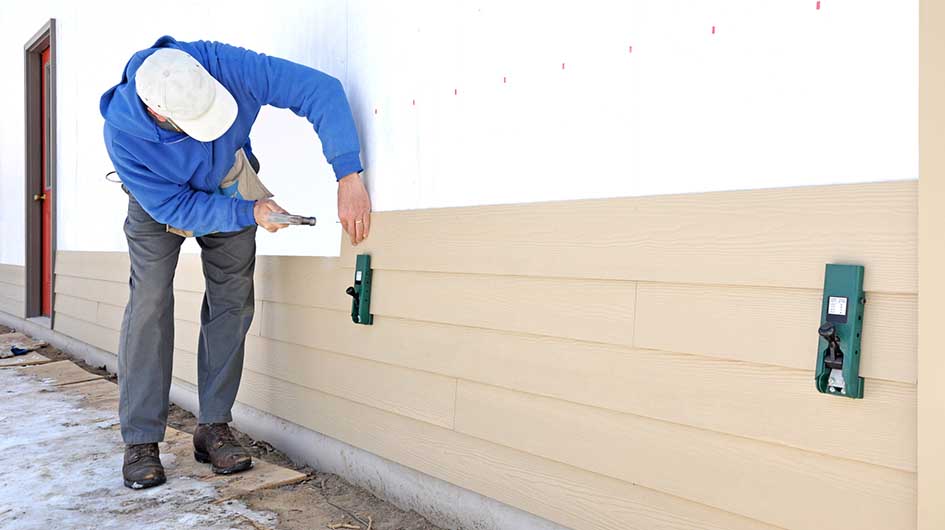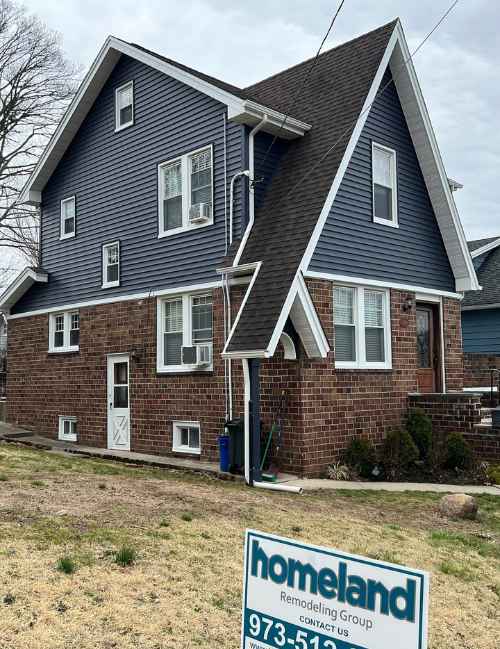The Essential Overview to the Numerous Sorts Of House Siding and Their Distinct Advantages
In the world of home enhancement, choosing the ideal home siding is a critical decision that influences both visual allure and practical performance. With so numerous options to consider, which siding product genuinely stands out for your certain job?
Wood Siding
Timber home siding, a prominent choice for residential outsides, uses an ageless aesthetic that integrates natural elegance with architectural stability. This exterior siding material is readily available in different styles, consisting of clapboard, roof shingles, and board-and-batten, allowing home owners to personalize their façade to match their design choices. Wood siding is typically crafted from sturdy types such as cedar, redwood, or pine, which are recognized for their durability and capacity to stand up to environmental stress factors.
One of the key advantages of timber siding is its excellent insulation properties, which can add to energy efficiency and reduced heating expenses. Furthermore, wood siding is biodegradable, making it an ecologically friendly choice when sourced sustainably. Normal maintenance, consisting of painting or staining, can extend its lifespan and improve its look, allowing house owners to preserve the natural beauty of the timber.
Nevertheless, possible downsides include vulnerability to parasites, rot, and weather damages, demanding adequate therapy and maintenance - morris siding contractor. In spite of these worries, when properly taken care of, timber house siding can provide a lovely and durable remedy that enhances the personality of a home while supplying a cozy, welcoming atmosphere

Plastic Home Siding
Vinyl house siding has become a leading option for homeowners looking for a low-maintenance outside alternative that integrates sturdiness and affordability. This flexible material is crafted from polyvinyl chloride (PVC), making it resistant to various climate condition, consisting of moisture and UV rays. Therefore, plastic exterior siding does not warp, rot, or discolor, guaranteeing durable aesthetic allure.
One of the main advantages of plastic exterior siding is its considerable variety of styles and shades, enabling property owners to accomplish the wanted seek their residential property without the need for regular repainting. In addition, vinyl home siding is very easy to set up, which can substantially reduce labor costs during building and construction or renovation jobs.
Plastic house siding also contributes to power performance. Several options feature insulation backing, which improves thermal efficiency, aiding to keep comfy interior temperatures and potentially lowering energy expenses. Moreover, its smooth surface area facilitates easy cleaning, needing just regular cleaning with a yard tube to get rid of dust and particles.
Fiber Cement Home Siding
Fiber concrete home siding has acquired traction among property owners and contractors alike because of its amazing combination of sturdiness and aesthetic flexibility. Composed of a mixture of concrete, sand, and cellulose fibers, this exterior siding option is crafted to stand up to extreme weather problems, consisting of high winds, heavy rain, and temperature level variations, making it a lasting choice for residential outsides.

Among the key benefits of fiber concrete siding is its resistance to bugs, such as termites, and its non-combustible nature, offering enhanced fire security. morris siding contractor. Furthermore, have a peek here it is available in a wide variety of shades, designs, and textures, allowing house owners to attain their desired visual without giving up performance
Another benefit is its low maintenance demands; fiber concrete siding normally needs painting or staining every 5-10 years, which is much less constant than various other materials. Its long life adds to a lower general price of possession, as it reduces the demand for constant repair services or substitutes.
Eventually, fiber concrete siding represents an exceptional financial investment for those looking for a durable, eye-catching, and functional outside alternative, incorporating both kind and feature to boost the home's curb appeal.
Metal Exterior Siding
The appeal of metal siding depends on its durable toughness and modern-day visual charm, making it a popular choice for modern style. Offered in products such as aluminum and steel, metal exterior siding offers a series of finishes and shades, enabling property owners to attain a customized look that enhances their layout vision.

Energy effectiveness is an additional substantial advantage, as numerous metal exterior siding products are created with insulation alternatives that aid manage interior temperature levels. This can bring about lowered energy prices with time. In addition, steel house siding is usually recyclable, making it an eco-friendly choice for sustainability-minded home owners.
The setup process for metal siding can be relatively uncomplicated, causing a quicker turn-around time for construction jobs. Generally, metal siding incorporates capability and style, making it a practical alternative for those seeking a enduring and aesthetically attractive exterior surface.
Block and Stone Siding
Brick and stone house siding attracts attention as a classic option that enhances the visual charm of any kind of home. Recognized for their longevity and reduced upkeep, this page these materials offer an exceptional roi while raising the property's visual appeal. Readily available in different shades, appearances, and patterns, brick and rock can be tailored to fit varied architectural designs, from conventional to modern-day.
One of the key benefits of brick and stone house siding is their energy effectiveness. Both products have natural protecting properties that assist manage indoor temperature levels, possibly decreasing cooling and heating prices. Additionally, they provide premium fire resistance contrasted to other exterior siding choices, adding to boosted safety.
One more benefit is their durability. Block and rock can last for years, usually requiring minimal upkeep beyond periodic cleaning. Unlike wood exterior siding, they are invulnerable to bugs and rot, making certain a durable outside that holds up against the elements.
Conclusion
In summary, the selection of siding significantly impacts a home's aesthetic appeal, power performance, and upkeep needs. Each kind of home siding-- whether timber, vinyl, fiber metal, concrete, or block and rock-- supplies one-of-a-kind advantages customized to different property owner preferences and ecological problems. Comprehending these options makes it possible for educated choices that enhance both the resilience and visual beauty of property exteriors. Ultimately, picking the ideal exterior siding is important for attaining an equilibrium between capability and style in residential style.
One of the key benefits of timber siding is its exceptional insulation homes, which can add to energy performance and reduced heating prices. Additionally, wood house siding is biodegradable, making it an ecologically pleasant option when sourced sustainably.One of the main advantages of steel exterior siding is its resistance to different ecological factors.Energy effectiveness is an additional significant advantage, as lots of More Bonuses steel siding products are made with insulation choices that help control indoor temperature levels. Each kind of siding-- whether wood, plastic, fiber metal, cement, or brick and rock-- offers unique benefits tailored to different house owner choices and ecological problems.